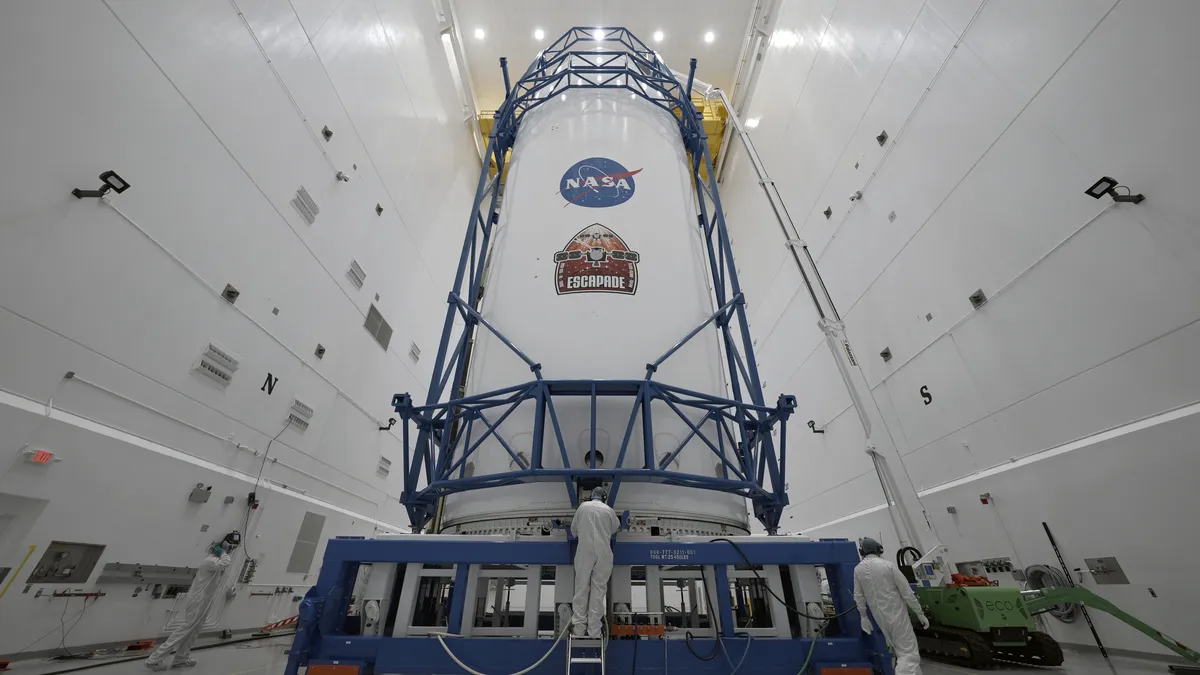
On November 9, 2023, Blue Origin is set to launch its second New Glenn rocket, carrying a pair of NASA spacecraft designed for exploration of Mars. This pivotal mission, known as NG-2, will take off from Cape Canaveral Space Force Station’s Launch Complex 36 around 2:45 p.m. Eastern Time. The official announcement regarding the launch date was made on November 5, marking an important step for Blue Origin in its goal of advancing space exploration.
The upcoming flight will be the first for the New Glenn rocket since its inaugural launch in January. It will carry the NASA Escape and Plasma Acceleration and Dynamics Explorers, or ESCAPADE, mission. This groundbreaking mission comprises twin small satellites that have been expertly crafted by Rocket Lab and are operated by the University of California Berkeley’s Space Sciences Laboratory. Their primary objective is to study the interaction between the solar wind and Mars’ magnetic field and upper atmosphere. These crucial studies will provide insights into how Mars lost much of its early atmosphere, thereby aiding preparations for future human missions to the Red Planet.
“We will be making the space weather measurements we need to understand the system well enough to forecast solar storms whose radiation could harm astronauts on the surface of Mars or in orbit,” stated Rob Lillis, the principal investigator for ESCAPADE at SSL. This mission is particularly significant as it aims to gather vital data that could enhance the safety of astronauts venturing to Mars in the future.
Initially, ESCAPADE was scheduled to launch last October alongside the first New Glenn mission. However, delays in vehicle development led NASA to remove the mission from that launch schedule. The first New Glenn flight in January only carried a technology demonstration payload from Blue Origin itself.
Notably, the launch of ESCAPADE will occur outside the traditional Mars mission windows, which typically open every two years. Instead, the mission will employ a novel trajectory developed by Advanced Space. This unique path allows the spacecraft to linger near the Earth-sun L2 Lagrange point for an entire year before performing an Earth flyby in November 2026, which will set it on a course to reach Mars by 2027. “Can we launch to Mars when the planets are not aligned? ESCAPADE is paving the way for that,” remarked Jeffrey Parker, Chief Technology Officer at Advanced Space, during a presentation at the Small Satellite Conference in August.
ESCAPADE is funded through NASA’s SIMPLEx program, which supports small planetary science missions. It was selected alongside other missions like Janus and Lunar Pathfinder. However, Janus faced cancellation due to delays in its primary payload, the Psyche asteroid mission, while Lunar Pathfinder was tragically lost mere hours after its launch in February.
Despite the ongoing government shutdown, which commenced on October 1 due to Congress's inability to pass a temporary spending bill, the launch is still on track. NASA is expected to provide limited coverage for the event, likely in the form of a webcast.
This mission will mark Blue Origin's first flight of the New Glenn rocket carrying an operational payload. In addition to the ESCAPADE mission, Viasat will also utilize this launch to test telemetry and data relay services with a user terminal mounted on the rocket. This demonstration is part of NASA’s Communications Services Project, which aims to transition from NASA-operated relay systems to commercial networks.
“NG-1’s goal was clear: reach orbit, everything after that was a bonus,” said Dave Limp, Chief Executive of Blue Origin, in a recent social media post. “NG-2 builds on that with our primary goal to get ESCAPADE safely to orbit and land the booster.” During the NG-1 mission, Blue Origin attempted to land the New Glenn first stage on a recovery ship named Jacklyn in the Atlantic Ocean, but an engine malfunction thwarted that effort. However, company officials are optimistic about a successful landing this time around. “What if we don’t stick the landing? That’s OK. We’ve got several more New Glenn boosters already in production,” Limp added.